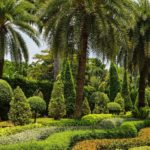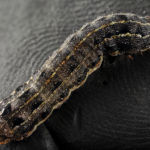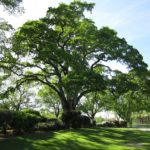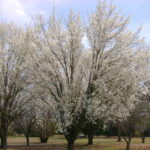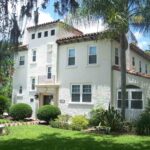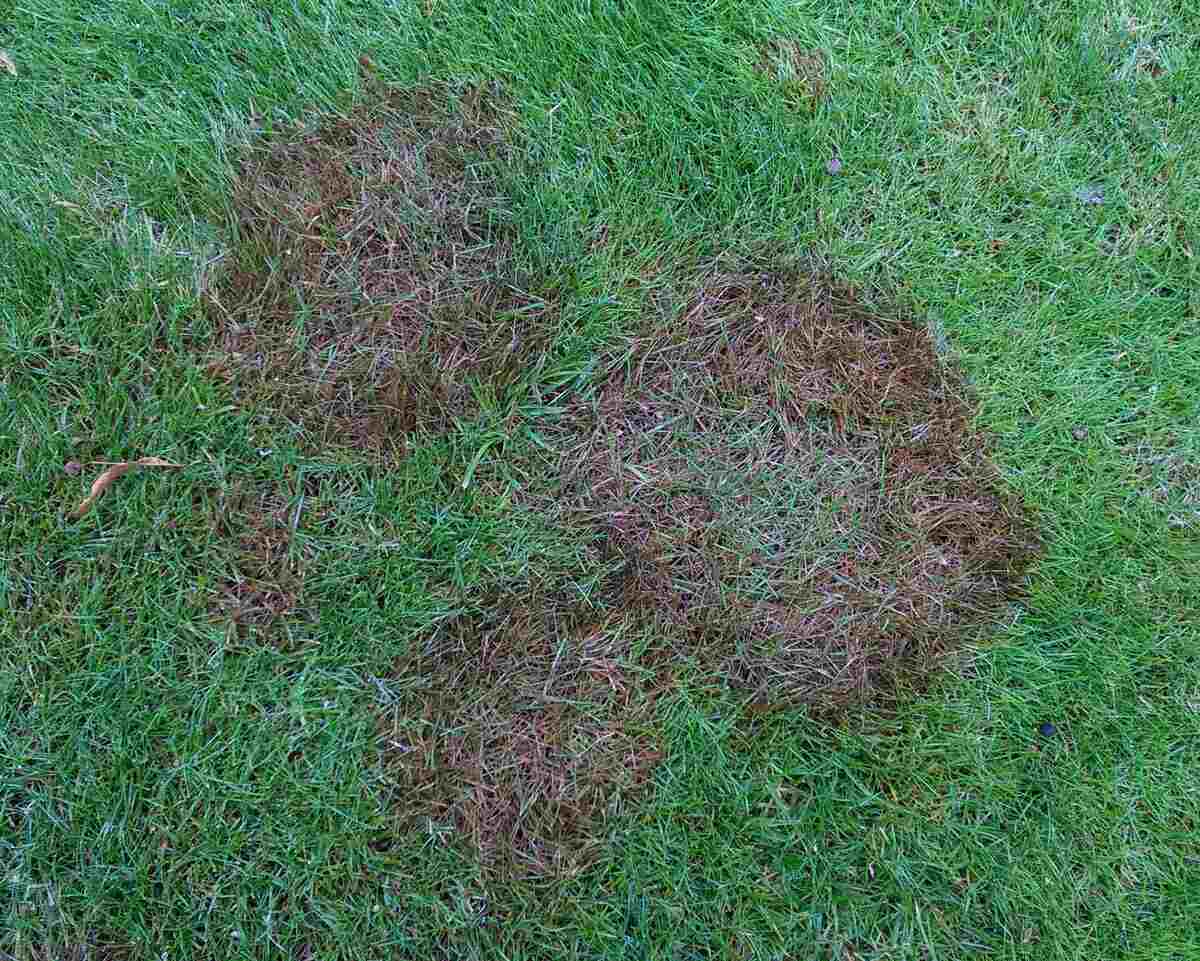
When winter rolls around, Jacksonville’s warm-season grasses go dormant. However, while your turf slows down its growth, fungi that cause lawn diseases are as lively as ever. In fact, a few of them thrive in cooler temperatures. So, it’s crucial for Jax homeowners to be vigilant even in the winter. Here are four winter lawn diseases that can affect your Jacksonville lawn:
1. Dollar Spot
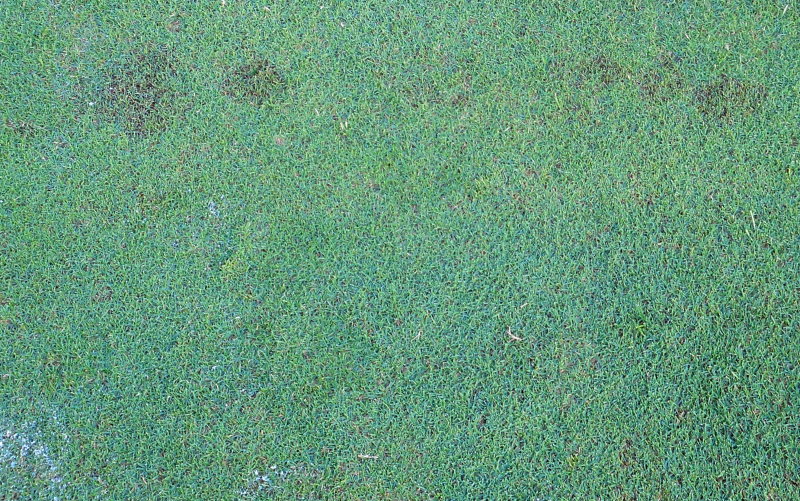
Photo credit: Scot Nelson / Flickr / Public domain
Caused by the fungus species Clarireedia jacksonii, dollar spot is named for the silver dollar-sized patches that it leaves on your lawn. On the individual level, dollar spot causes small, circular brown or tan spots on grass blades. These spots can turn white. On a bigger scale, it causes round, straw-colored patches on your turf. During a serious infection, the patches can spread to be more than 6 inches in diameter, and it can damage your entire lawn.
Dollar spot strikes Jacksonville yards throughout early winter when humidity levels are high and cool nights follow warm days. It thrives in nitrogen-deficient lawns, so proper fertilization, along with good winter lawn care practices, can chase away this disease.
2. Large Patch
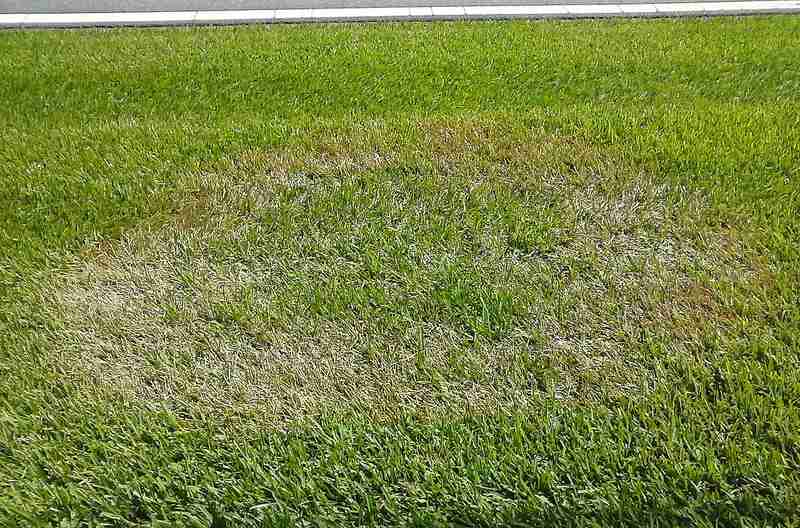
Photo Credit: Scot Nelson / Wikimedia Commons / CC0 1.0
Known by some Jacksonville gardeners as “brown patch” and “Rhizoctonia Blight”, large patch is actually the new name for this old lawn disease. Brown patch is also the name of another lawn disease, but the difference is that large patch is active in cooler temperatures, while brown patch is active when it’s hot.
The large patch fungus typically attacks from November to May, when daytime temperatures fall below 85 degrees, and nighttime temperatures range between 60 to 75 degrees. Like many lawn diseases, infection is triggered by excess moisture from rainfall, over-irrigation, or extended periods of high humidity that cause your grass to be wet for a long period of time.
This fungal disease only affects your turf’s leaf blades and leaves the root system intact. It infects the leaf area closest to the soil, rotting it until it detaches from the root. The leaf can easily be pulled at this point. The damage looks similar to herbicide damage on St. Augustinegrass, but the base of the leaf will look dark and smell rotten.
Here are the effects of large patch on your lawn:
- Small yellow patches that grow brown before thinning out and appearing dead
- Donuts of damage where rings of damaged grass encircle a seemingly healthy patch of turf
- During serious infections, the small patches will eventually grow into large areas of damaged grass
Eventually, the infected grass blades will rot off and decompose. New grass blades can then grow in their place. You can mow the damaged grass to remove the dead grass blades.
3. Helminthosporium Leaf Spot
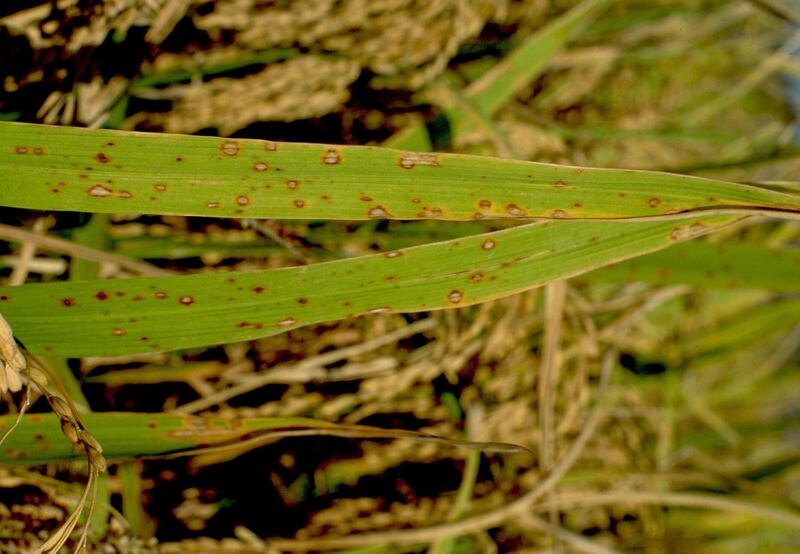
This lawn disease affects all of Jacksonville’s warm-season grasses, but Bermudagrass is most seriously affected by it. Although it’s most commonly seen from fall to winter, Helminthosporium leaf spot can be seen all year round, as it’s caused by many fungi species that thrive in different conditions. It’s triggered by mild, wet periods.
The main symptoms of this fungal disease are the tell-tale spots on leaf blades. The spots differ slightly depending on the fungus attacking your lawn; they can range from solid brown to purple to bleached-looking. During a severe infection, the leaves have a purple or reddish-brown tint to them at a glance. Prolonged infection can cause “melting-out”, where large areas of grass thin out, turn tan, then die.
4. Rust
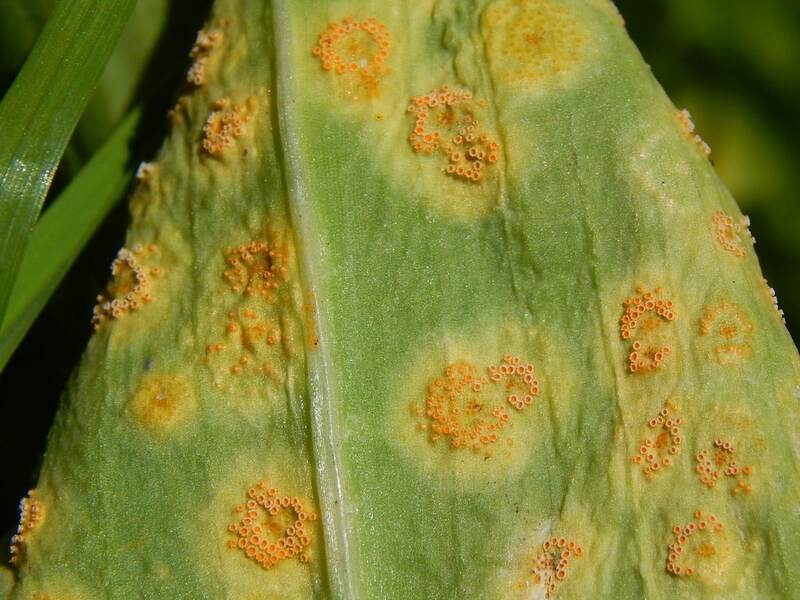
Caused by fungi in the Puccinia genus, rust attacks when your turf’s growth is slowed during colder temperatures. It typically appears from late fall to early spring when the colder temperatures send warm-season grasses into dormancy and disappears once warmer temperatures spur growth.
While it typically attacks Zoysia and St. Augustinegrass, it can also strike perennial ryegrass that’s used to overseed Florida lawns in the fall to maintain a green yard throughout the winter months. Rust can only attack when grass leaves are constantly wet and worsens when turfgrass is stressed from bad lawn practices.
Rust causes light yellow flecks on grass blades. The flecks grow larger over time. When allowed to progress further, rust will cause orange pustules to form on the leaf blade. The pustules contain spores, which rub off when the pustules are touched. A heavy infection makes the turf thin out and take on a yellow or light brown color. While this looks bad, the damage doesn’t go beyond that; rust won’t kill turf, but it’s a huge eyesore.
FAQs About Winter Lawn Diseases in Jacksonville
Yes, you can. Sometimes, mowing might even help get rid of dead grass blades. However, you should mow infected areas last to limit the spread of the disease. Always rinse your mower blades after use to wash out the fungi.
The best way to stop overwatering is by listening to your turf. Check your soil and turf for signs that indicate that it needs watering. Here are some of these signs:
● Grass blades fold up
● Wilting
● Grass turns blue-gray
● Footprints don’t disappear after you walk on the grass
You can read our article about lawn watering tips for Jax homeowners to learn more.
Since many lawn diseases are caused by fungi, using fungicides on your lawn will kill off the disease-causing pathogens. Make sure that the fungicide you use can be used on turfgrass; you can check the label to find out. Better yet, you can consult a lawn care professional to help you choose the right treatment.
Fungicide only stops the spread of the disease, but your grass still needs to regrow to recover. During the winter, this can be tough, as warm-season grasses stop growing until spring comes around.
You should also rule out the possibility of infestation by one of Jacksonville’s worst landscape pests, as some pests like southern chinch bugs and white grubs can also cause your lawn to grow yellow and die, much like fungal diseases do.
How to Keep Your Jacksonville Lawn Disease-Free
Many winter lawn diseases come around when your lawn isn’t being properly cared for. So, you should always keep your lawn healthy with good lawn care management, like proper mowing, watering, aeration, and fertilization.
You can maintain the lawn yourself, but why not save yourself the trouble and hire a lawn care service instead? Contact a Jacksonville lawn care professional today who can give your lawn the love it needs.
Main Image Credit: Kris Lord / Flickr / CC BY 2.0
